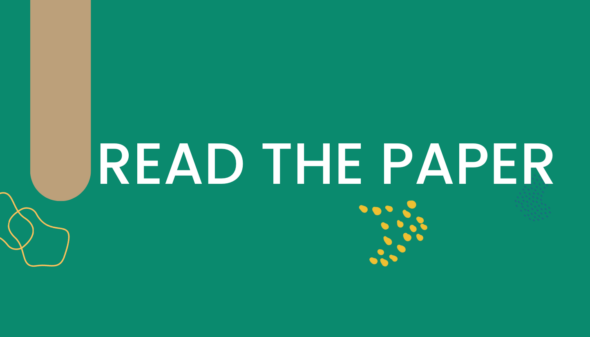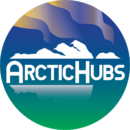Reports
Global economic drivers in the development of different industrial hubs in the European Arctic
Work package 1 – ArcticHubs report
The European Arctic (EA) is increasingly affected by globalization, which consists of various global megatrends impacting all industries and communities. This report analyses global drivers affecting key industries—aquaculture, mining, forestry, and tourism. The study provides a cross-industry perspective, examining the implications of global economic trends on local hubs in the EA, aiming to understand their future pathways and sustainability challenges. Researchers have carried out almost 70 interviews and examined several national industry-specific strategies and relevant EU strategies.
D1.2 Global economic drivers in the development of different industrial hubs in the European Arctic
Analyses of the corporate social responsibility of international companies operating in the Arctic
Work package 1 – ArcticHubs report
The report investigates how companies in different resource-based industries (i.e., aquaculture, tourism, mining, and forestry) understand their corporate social responsibility (CSR) in the context of their business operations in the Arctic. Researchers have analysed the sustainability reports and/or annual reports and corporate websites of 17 companies and associations from the aquaculture, tourism, mining, and forestry sectors that are active in several Arctic hubs included in the project.
D.1.2 – Subtask 1.1.3. Analyses of the corporate social responsibility reporting of the main international companies operating in different Arctic hubs: sustainable development in focus
Analysis of climate change impacts in different industries and hubs
The aim of the report is to analyse the meaning of climate change as a global driver for different industries and hubs. The data comes from national climate change and climate
change adaptation plans, national Arctic strategies, industry strategies as well as interviews of key informants. The report also looks at challenges that are simply too complex and uncertain to concretize hence remain as suggestions. As developing co-knowledge is at the core of the ArcticHubs project, this deliverable is data-driven and not based on previous academic literature.
Work package 1 – ArcticHubs report
D.1.4 Climate change impacts in different industries and Arctic hubs
Political drivers for development of different industries in the European Arctic
D1.3 report examines the geopolitical tensions and factors influencing the development of key industries in the European Arctic, including aquaculture, forestry, mining, and tourism. The analysis is based on national Arctic strategies from European Arctic states and relevant EU strategies, as well as 60 interviews with industry specialists. The report applies both classical and critical geopolitical approaches to investigates its questions: 60 interviews were carried out to explore how geopolitics can affect the development of different industries and how informants related to these industries understand their operations in the Global North.
Work package 1 – ArcticHubs report
D1.3 Geopolitical tensions and drivers of different industries in the European Arctic
Publications
Journal of Land Use Science, Volume 19, Issue 1 (2024)
Edited by Ivana Zivojinovic, Pasi Rautio, Jerbelle Elomina
Download the full Journal from here.
Geopolitical tensions framing different industries in the EuropeanArctic: aquaculture, forestry, mining, and tourism in question (2024)
L. Suopajärvia, J. Tikkanena, A. G. Edvardsdóttirb, S. Engenc, E. Inkiläd, A. Iversene, V. Nygaardf and R. Ólafsdóttir, 2024, Journal of Land Use Science 19:1, 170-185, DOI:10.1080/1747423X.2024.2362733
The paper examines how geopolitical tensions, particularly those involving Russia, China, and the USA, have influenced the development of key industries in the European Arctic, namely aquaculture, forestry, mining, and tourism. Through qualitative analysis of 60 interviews, the study reveals that state power, security concerns, and international relations significantly shape economic activities in these sectors, with an increasing focus on state actors’ interests in the region’s natural resources and physical space.
Download the paper from here. 
Arctic cruise tourism and social license to operate: exploring social acceptance and trust in cruise tourism
R. Ólafsdóttira, R. Bogadóttirb, J. Karkut, Johannes T. Wellinga, S. Tuulentied, A. G. Edvardsdòttire, E. Pállsdóttir Vangb and A. Karlsdóttir, 2024. Journal of Land Use Science 19:1, 170-185, DOI:10.1080/1747423X.2024.2362733
 The paper examines the impact of increased Arctic cruise tourism on local communities, evaluating the feasibility of Social License to Operate (SLO) by analyzing attitudes and trust. Findings show economic concerns dominate, with mixed acceptance levels and the need for better communication among stakeholders.
The paper examines the impact of increased Arctic cruise tourism on local communities, evaluating the feasibility of Social License to Operate (SLO) by analyzing attitudes and trust. Findings show economic concerns dominate, with mixed acceptance levels and the need for better communication among stakeholders.
Download the paper from here.
Industry-specific impacts of global drivers in the European Arctic
V. Nygaard, S. Engen, L. Suopajärvi, A.G. Edvardsdóttir, A. Iversen, R. Bogadóttir, S. Tuulentie, J.W. Bjerke, P. Rautio, J. Elomina & J. Miettinen, 2024, Journal of Land Use Science, 19:1, 150-169,
DOI: 10.1080/1747423X.2024.2358951
 The paper examines how global trends influence key natural resource-based industries in the European Arctic, specifically aquaculture, forestry, mining, and tourism. The study identifies eight major global drivers affecting these industries, highlighting the importance of strategic planning and collaboration among stakeholders to address the unique challenges and opportunities in this region.
The paper examines how global trends influence key natural resource-based industries in the European Arctic, specifically aquaculture, forestry, mining, and tourism. The study identifies eight major global drivers affecting these industries, highlighting the importance of strategic planning and collaboration among stakeholders to address the unique challenges and opportunities in this region.
Download the paper from here.
Between the local and the global? Reindeer herders’ perspectives on land use challenges and conflicts in the Sámi homeland, Finland
M. T. Turunen, T. Rikkonen, A. Nikula, S. Tuulentie & P. Rautio, 2024, Journal of Land Use Science, 19:1, 150-169, DOI: 10.1080/1747423X.2024.2358951
 The paper explores how various land uses impact reindeer herding in Inari, Finland. Through a Public Participation GIS survey, it highlights the herders’ concerns about predators, tourism, hunting, and forestry, emphasizing the cumulative negative effects on their traditional livelihoods and suggesting that new land uses should be directed to existing population centers rather than grazing areas.
The paper explores how various land uses impact reindeer herding in Inari, Finland. Through a Public Participation GIS survey, it highlights the herders’ concerns about predators, tourism, hunting, and forestry, emphasizing the cumulative negative effects on their traditional livelihoods and suggesting that new land uses should be directed to existing population centers rather than grazing areas.
Download the paper from here.
Systematic Literature Review of Land Use Conflicts in Northern Sweden—Lessons Learned and Ways Forward
J. Elomina, I. Živojinović, Resources 2024, 13, 77, DOI: https://doi.org/10.3390/resources13060077
 The paper provides a comprehensive review of land use conflicts in Northern Sweden driven by the global demand for resources and the green transition. It identifies three main types of conflicts—access, development, and management—and suggests inclusive, participatory approaches and broader stakeholder understanding to effectively address these issues.
The paper provides a comprehensive review of land use conflicts in Northern Sweden driven by the global demand for resources and the green transition. It identifies three main types of conflicts—access, development, and management—and suggests inclusive, participatory approaches and broader stakeholder understanding to effectively address these issues.
Download the paper from here.
Lean forestry – A paradigm shift from economies of scale to precise and sustainable use of ecosystem services in forests
P. Rautio, H. Lideskog , U. Bergsten , M. Karlberg, 2023. Forest Ecology and Management (530)120766
Lean forestry is a novel philosophy of forestry practise that aims to direct the idea of “big is beautiful” in modern silviculture more into “do cost effectively only what is needed to fulfil the goals”. This kind of a paradigm shift requires systems with new kinds of abilities to remotely sense the surrounding environment.
Download here.
Multiple-use forests and reindeer husbandry – Case of pendulous lichens in continuous cover forests
T. Rikkonen, M. Turunen , V. Hallikainen , P. Rautio, 2023. Forest Ecology and Management (529)120651
This study shows that in order to better reconcile forestry and reindeer husbandry in a reindeer herding area, the larger trees should be saved, and the cutting cycle should be kept as long as possible. In addition, lichen-rich areas should be excluded from logging, and the access of reindeer to those areas should be secured.
Download the paper here.
